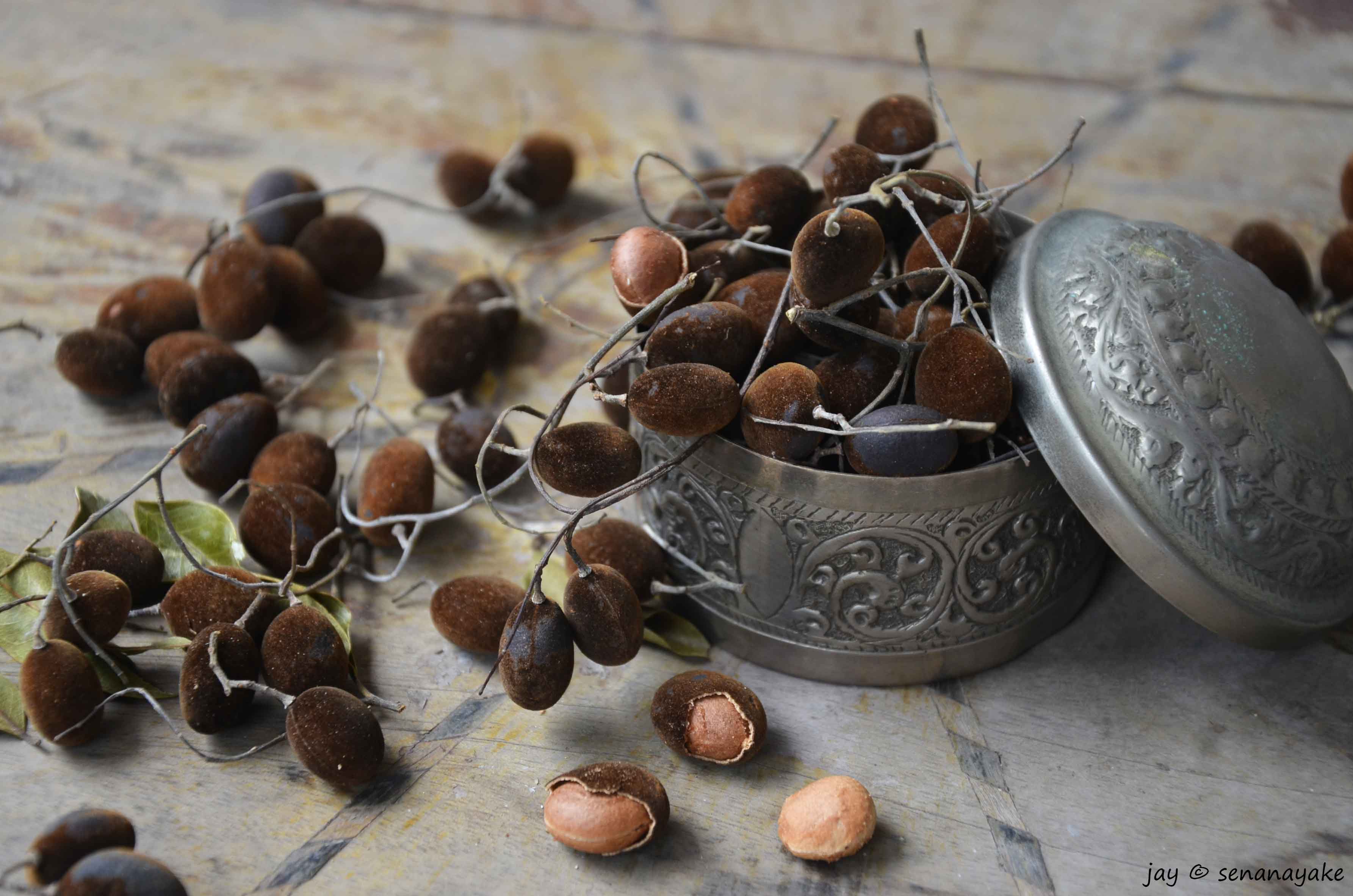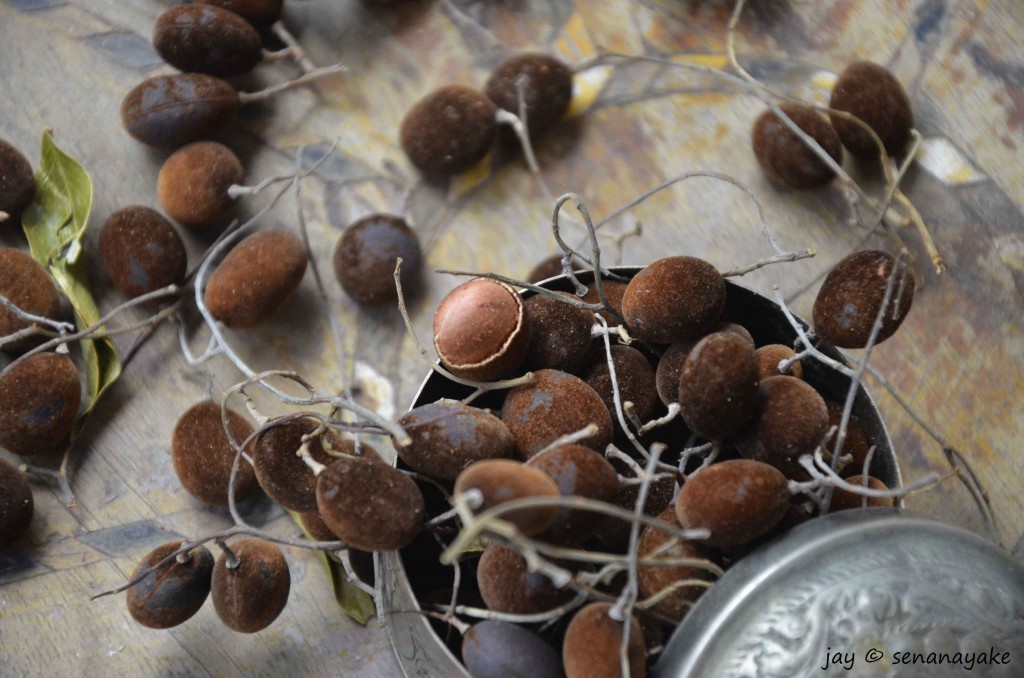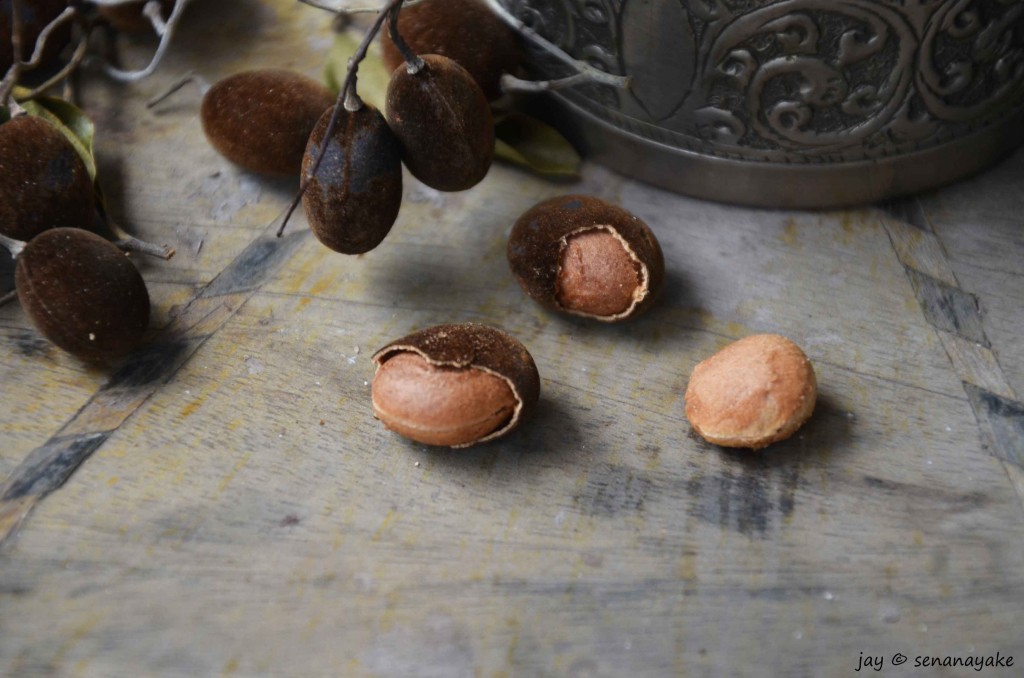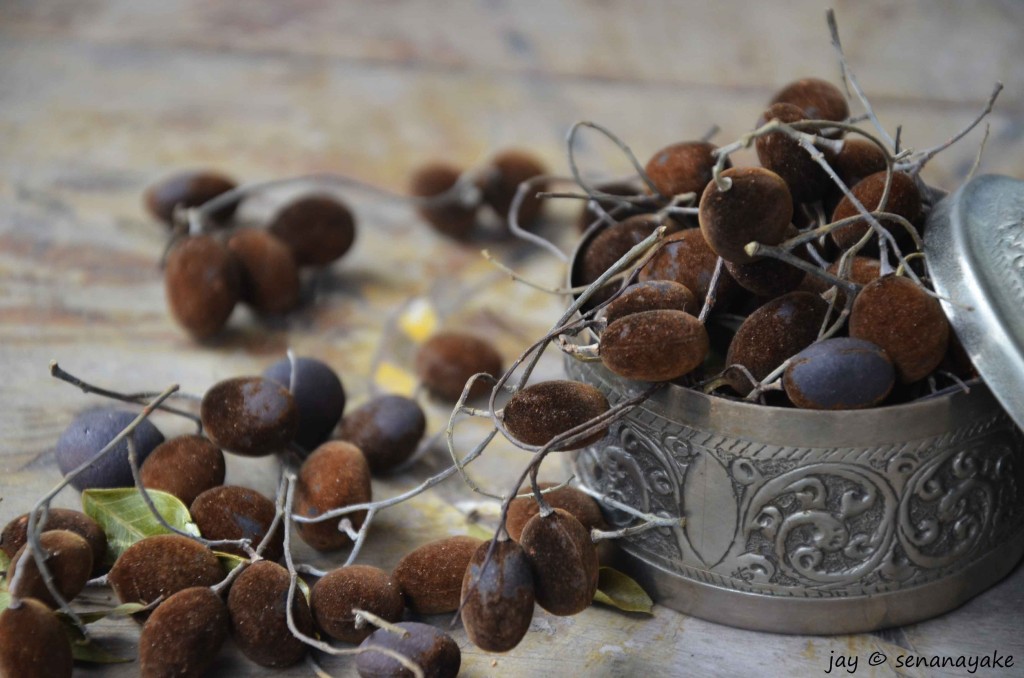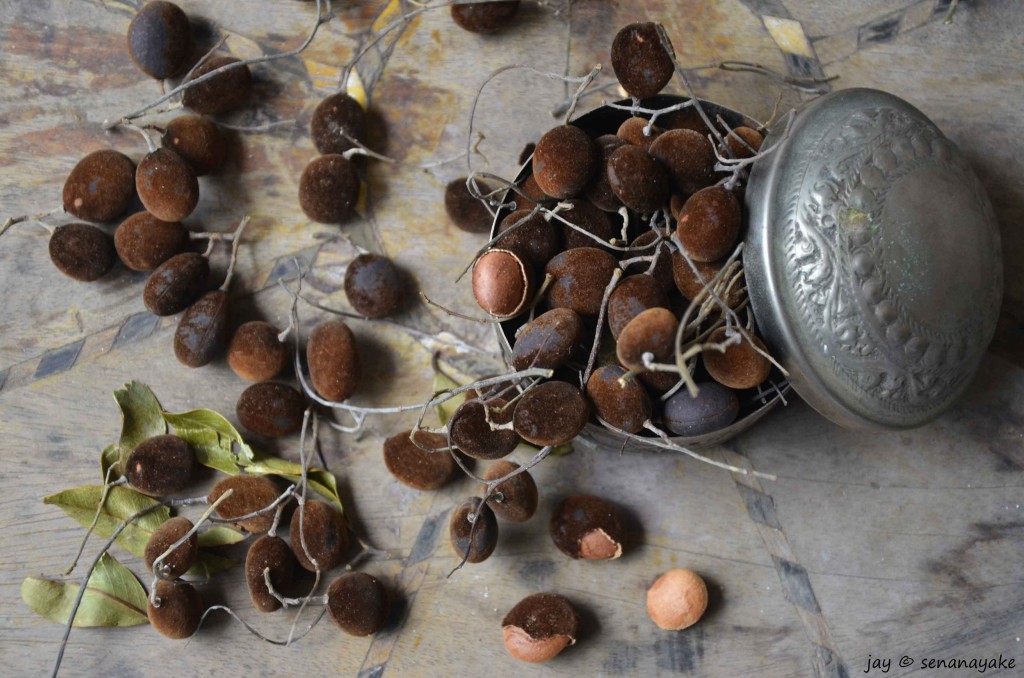(In that cliched TV presenter voice) If you’ve had this as a kid, your childhood was awesome.
If you haven’t had them well, its high time you had it!
When my mother brought home a small polythene bag full of these the other day, I practically tripped over my feet trying to get to it!
Known to us as gal siyambala, the Velvet Tamarind or the Dialium indum reigns high in my childhood memories and my heart still skips a beat where I catch a glimpse of them. The earliest memories that I have of this tiny fruit are of its velvety exterior. I simply like how plush it felt. Plunging your hand into a bagfull of velvet tamarind is like plunging your hand into a bag of velvet covered buttons. And I would just sit there, gently stroking the husk of this tiny fruit with the back of my finger nail, letting my mind wander, before finally cracking one open and popping it in my mouth. The touch and the feel was very necessary. It still is, very much.
Despite its rather opulent name and luscious appearance, the Velvet Tamarind actually grows in the wild, on large shady trees typically in the semi-dry zone of Sri Lanka. It is a tall tropical giant that can also be found in South Asia, South East Asia and also, in West Africa.
When ripe, the gal siyambala falls to the ground and this is the season we all wait for! Children fight each other to collect the most amount of gal siyambala as possible while adults often collect these and sell them in bulk at the Sunday markets. Often times we even see a daring bunch or two throwing sticks and stones at the trees with the hope of landing the fruits on the ground, for they grow at the very end of the branches which cannot support a human’s weight. This fruit is so popular that some even resort to cutting down the branches to get at the fruit, so much so that these tree giants are facing extinction if proper steps are not taken to preserve them.
Once you crack the thin, brittle covering that forms the exterior of the fruit, you encounter a round, brown interior, slightly lighter than its exterior, with soft flesh covering a hard dark brown seed. This is the prized treasure. Pop it in your mouth and suck at it until all you are left with is the seed and spit it out. Reach out for another (or several more) and I usually continue till I can’t feel my teeth anymore.
My parents say that it’s usually easy to find me during the Gal Siyambala season. I leave a trail of Gal Siyambala husks wherever I go.
The taste of the Gal Siyambala takes me back to my preschool days of modelling clay and lego pieces. It reminds me of cool evenings of choir practice during school days when rain threatened in the distant when the bags and bags of Gal Siyambala consumed showed in my solos and my choir teacher was not very pleased. “You have so much potential Jayani, if only you would control your mouth” she would say. Lesson learnt- too much gal siyambala had a way of getting in the way of my high notes with a certain thickness coating the throat.
Happy times :)
Gal siyambala is sweet at the same time it is sour, with a similar taste as tamarind (after all it is one version of tamarind) but drier and more powdery and definitely sweeter. There’s nothing to chew on, simply a powdery sweet and sour powdery pulp that one has to nibble at with one’s tongue. It literally melts in the mouth. With a unique smell that you can pick up from metres away, it makes for a great snack and a healthy one at that for it contains hardly any calories or fat and is packed full of vitamin C and other nutrients. A snack that tastes great and addictive at the same time being really good for you? Mais oui! Sri Lanka is cool like that.
Well Gal Siyambala can’t only be taken as a local superstar, its celebrity status is known in other parts of the world as well. In Malaysia it is known as Keranji and in Thailand, known as Luk Yee, it is dried, sugar coated and spiced with chilli to create this delicious snack. Many varieties of Gal Siyambala exist around the world, some of them larger, some of the pulpier while some are found to be drier and milder in flavour.
The gal siyambala leaves and tree bark are said to have medicinal value and is used in a variety of medicines in ayrveda. Growing in a tree that has so much goodness, gal siyambala must be like little yummy pills of goodness that you don’t really complain about popping.
Whatever it may be called worldwide, and however it is had, it will always be our very own gal siyambala to us.

